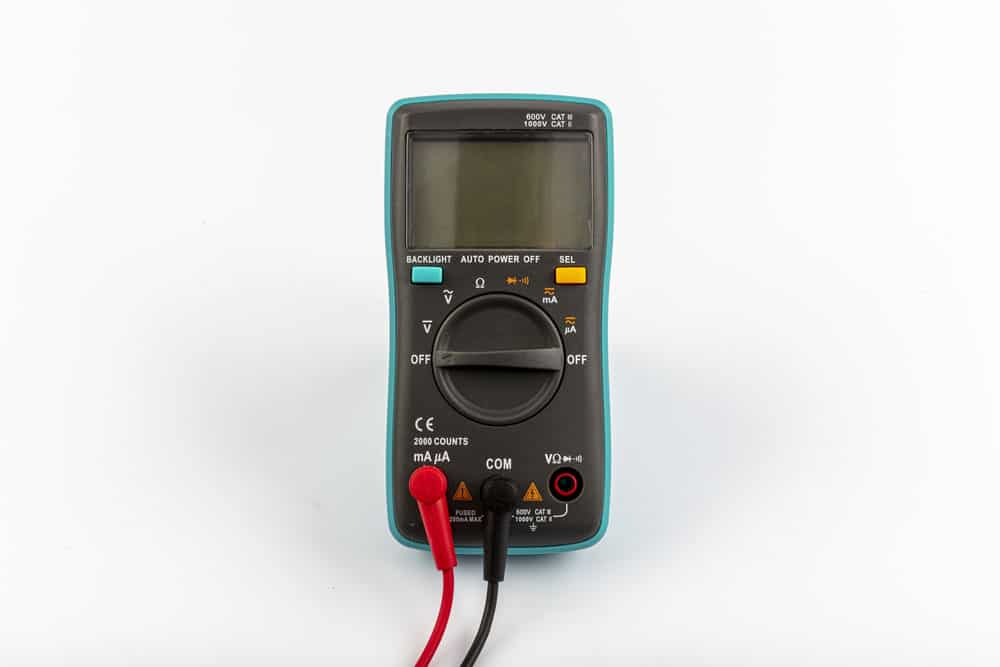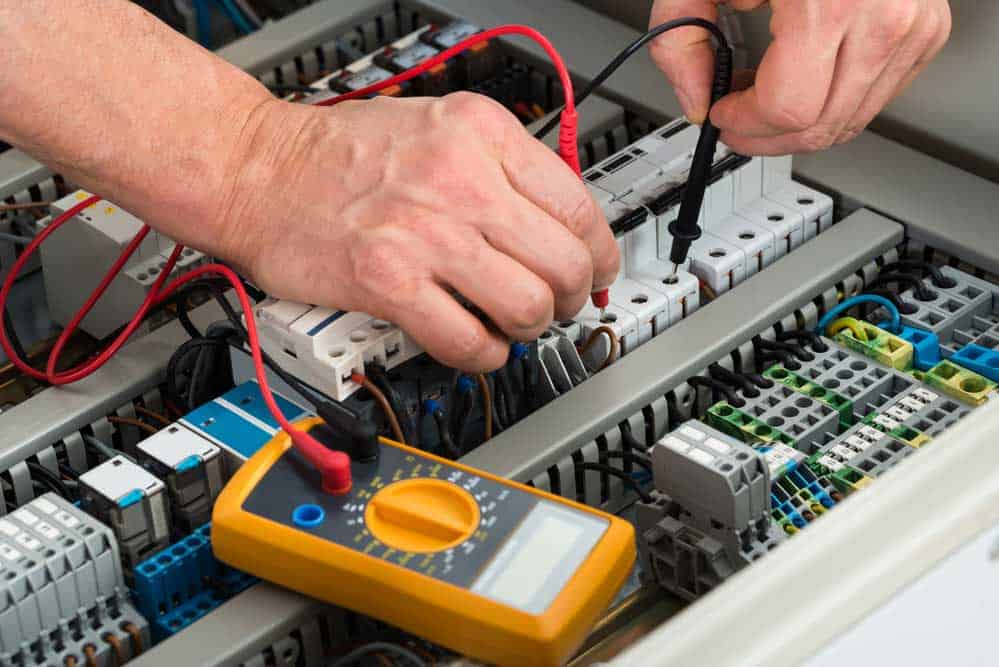How to Check Something to See Do We Have Continuity
Do you know what the basis of an electric device is? It's the circuit. The circuit is a circular path having the same beginning and ending point. The current flows in a circuit from a power source and takes it to the electrical device. This current comes back to the power source. And here's how the circuit completes itself. Now, until and unless there is a perfect continuity test of current, the device works well. If continuity breaks, the device stops working.
It's quite easy to check the continuity with the continuity test. Now, let's know what and how about this test in detail.
What is a continuity test?
As the name suggests, the continuity test checks the continuity of the current. In simpler words, you can say it checks if the current is flowing freely from one end to the other. There are devices such as multimeter or ohmmeter to perform this test. You can also find some specialized continuity testers for the test. These testers are basic, low-cost, and have a bulb to indicate the flow of current.
In this test, you provide a small voltage between the two testing points of the circuit. If something interrupts the flow of current (or electrons), it means the circuit is open. The interruptions can be due to damaged components, cracked conductors, or high resistance. If there are no interruptions, it is a continuous circuit.
Why do you conduct a continuity test?
In electronics, continuity testing is quite important. You can perform this test to check various things within a circuit, such as:
- You can check the quality of soldering. Sometimes, soldering is a cold solder connection. Most of the time, you cannot identify it visually. Such soldering appears connected, but in reality, they are not.
- Sometimes, there are broken wires within the circuit. You can check the wire connection with the continuity test. This is especially important for power cords and headphone wires. These wires appear normal from the outside, but there can be some damage in reality.
- Also identify any damaged component within the circuit.
- Do this test to know if two points have a connection in them or not, as in PCB.
- You can also verify the schematic diagram with the continuity test.
Tools for continuity test
As discussed above, you can either use a continuity tester or multimeter to perform this test. To learn more about these safety tools, read further.
Continuity tester
You can use this device for testing metal pathways. A battery is the source of power for this tester. You will find a metal probe at one end of this tool. On the other end, there is a wire lead which either has an alligator clip or a probe. Its working is quite simple. Just touch the metal probe and wire lead with each other. If the circuit is complete, the light or buzzer will go off. In some devices, you can also find an LED or any other visual indication.
In the same manner, you can test the electrical path for a device, appliance, or circuit. You can use a continuity tester for various purposes such as:
- If a single-pole switch is working
- The lamp wiring
- Wires to know if the circuit is complete
- To know if there is any short circuit
Make sure that the power supply is off before using this tester as it is dangerous to use it on live wires.
Multimeter/Multitester or Ohmmeter
This device can test various other electrical issues apart from testing the continuity of the electrical path. You can test for AC/DC voltage, open circuit, short circuit, or amperage. This is a rectangular tool with a dial or digital setting. With this dial, you can set the tool for the test you want to perform. Like a continuity tester, a multimeter also gets its power through a battery. You will find multiple holes at the front of the multimeter.
Out of these one is "COM" which means short for "common". This is for the ground. Another hole is mAVΩ which means "measure amperage, voltage ohms. This is used to measure current. Apart from these two, there is a port of "10A". You can use this for measuring very high currents. It has two wire leads: red and black. You have to plug the black into the COM slot and red into the mAVΩ slot of the multimeter. The other ends of the wires have metal probes.
To test continuity, set the multimeter at the ohm setting. This measures the resistance in the electrical pathway. When there is low resistance, it means the path has greater continuity. Now when you touch its wire leads together, it must indicate 0 resistance. It means there is no resistance, and the path is continuous. When the indicator shows infinity, it means there is no path. Similarly, you can judge
whether a device is complete, open, or not usable.

Image: Electric multimeter
Continuity Test Procedure With A Multimeter
When you are using a multimeter to check continuity, you can do it in two different ways:
continuity mode and ohmmeter.
Continuity Test for Capacitance:
Before performing any of the above tests, you must
- Remove the capacitor from the circuit
- Discharge it completely
Test with continuity mode:
- First of all, set the dial to continuity mode.
- Secondly, plugin red and black probes into multimeter sockets as described above.
- Now, connect the other end of the multimeter's red probe to the capacitor's positive terminal.
- Following this, connect the negative terminal of the capacitor with the black probe of the multimeter.
- In case the capacitor is working well, the multimeter will show"0" initially. The multimeter charges the capacitor. With this, the reading reaches infinity or OL. The "OL" reading shows that the capacitor is open and charged completely.
- You will see a very low value (short) or infinity (open) in a damaged capacitor
Test with resistance mode:
- First, set the multimeter to resistance mode
- Connect the red and black probes to positive and negative terminals of the capacitor.
- The capacitor is good if the resistance readings start from "0" and reach infinity. This shows that it was charging initially.
- If you get very high initial resistance, it means the capacitor is damaged.
- If there is low resistance, your capacitor is short.
Continuity Test for Inductors:
An inductor is a coil, and to test it, you must remove it from the circuit.
Test with continuity mode:
- As described above, set the dial to continuity mode.
- Plugin red and black probe into multimeter COM and V-ohm sockets
- Now, connect the red and black probes to the positive and the negative terminals respectively.
- In case the inductor is working well, the multimeter will beep. You will see a very low value of readings. However, you cannot identify any short turns of the inductor.
- In case of a damaged inductor, the multimeter will not beep. In this case, the multimeter will show "1" or "OL" readings indicating an open circuit.
Test with resistance mode:
- First, set the multimeter to resistance mode. Try to adjust it to the lowest possible readings.
- Secondly, connect the red and black probes to positive and negative terminals of the inductor.
- Now, if the ohmmeter shows few ohms resistance, the inductor is good.
- And if you get very high initial resistance, it means the inductor is damaged.
- Or if there is low resistance (near to zero), the inductor might have short turns.
Continuity Test for cables and wires
You must always check the continuity of cables and wires before electrical installation. For this purpose, the continuity test is quite simple.
- First take the digital multimeter
- Secondly, connect the red and black probes to a multimeter as described above.
- Thirdly, connect both the ends of cables and wires with the multimeter terminals.
- Now, check the readings. If it is "0 Ω", it means your cables and wires are working well. In the case of "infinite" reading, consider changing the cables and wires.

Image: continuity test for an extension cable
Continuity Test for fuse
Repeat the same process as you did with cables and wires. The meter reading "zero" means the fuse is in good condition. While an "infinite" reading means fuse continuity is broken.

Image: Electrician checking fuse box
Continuity Test for switch/push buttons
For switches and push buttons also, you need to conduct the same test as above. However, you need to do the test in both "on" and "off" conditions in this case. Firstly, take the reading in the "ON" mode. Secondly, repeat the process for the "OFF" mode. In the first test, you must get "zero" while you must get "infinite" for the second test. This means your switch and push-button are in good condition.
On the other hand, if both readings are "0" or "infinite," the switch is in a short circuit. In this case, you must replace the switch/push button.
How to Test Continuity without A Multimeter
If you do not have a multimeter, no worries. You can make a Homemade Continuity Tester. Just get a 9v battery, buzzer or LED resistor, and two wires. Connect them as shown in the figure. Your continuity tester is ready.
Source: https://www.electricaltechnology.org/2019/01/continuity-test-multimeter.html
Some important points to remember for the continuity test:
- Always pick a multimeter of high quality and with high CAT readings.
- Before conducting the test, cut off the power supply to the testing device. If there is already some voltage, you may not get an accurate reading.
- Always test your meter before performing the test. For this, brush the two leads together. The beep sound makes sure that the meter is in the right mode.
- No matter which probe to what side, the results will be the same because continuity is non-directional.
- Your multimeter will consider small resistors and inductors as short circuits as they are like wires.
Conclusion:
Testing continuity of circuits is vital for major electronics repair. Checking the circuit continuity helps you pinpoint any issues with the integrity of the circuit. However, to prevent any issues with your electrical devices, you must start early. Go for high-quality cable assemblies and wiring harnesses. Cloom offers you the best solution for wire assemblies. We also have the custom designing option with us.
Source: https://www.wiringo.com/continuity-test.html
0 Response to "How to Check Something to See Do We Have Continuity"
Post a Comment